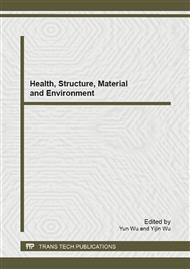p.1023
p.1029
p.1033
p.1039
p.1043
p.1049
p.1054
p.1058
p.1064
Study on Automatic Safety Monitoring and Management System of Tailings Reservoir
Abstract:
The tailings dam is a very important component part in mine production facilities. Meanwhile, it is a potential major risk source with high potential energy. Through collecting many accidents of the tailings dam, it is showed that accident type of the tailings dam mainly is dam-break, damage of drainage system, leakage of tailings, etc. On the basis of this analysis, the main causes of dam-break are slope instability, breaking construction rule, unusual rainfall, etc. The automatic safety monitoring and management system of the tailings reservoir (ASMMS) is a powerful measure for mine safety production. The basic frame of the ASMMS is proposed. The main contents and key problems of the ASMMS are also analyzed. It can provide a strong theoretical and technical basis for the safety and management of the tailings dam.
Info:
Periodical:
Pages:
1043-1048
Citation:
Online since:
February 2013
Authors:
Keywords:
Price:
Сopyright:
© 2013 Trans Tech Publications Ltd. All Rights Reserved
Share:
Citation:


